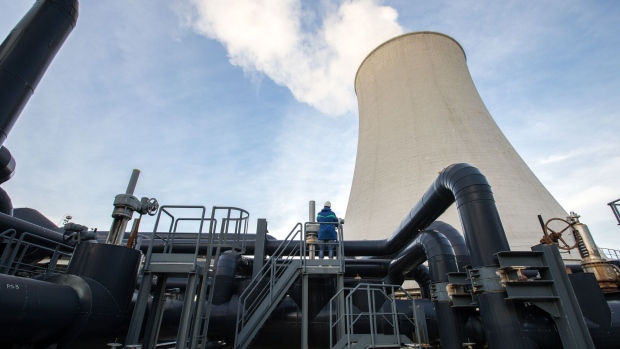Apr 30, 2024
Enel Faces Higher Rate on €13.5 Billion Loan After Emission Miss
, Bloomberg News

(Bloomberg) -- Enel SpA faces paying higher rates on the world’s largest sustainability-linked loan after missing an emissions target.
The failure to meet its 2023 goal has already led the Italian energy firm to pay an increased coupon on sustainability-linked bonds. It also has linked several loans to the same target, including a €13.5 billion ($14.5 billion) revolving credit facility, the largest such loan on record, according to data compiled by Bloomberg.
That means it will have to pay a step-up in rates on the loans as well. It’s the first sustainability-linked loan known to face such a penalty trigger, in a largely opaque market.
While its exposure to the loans is even bigger than for its $11 billion of relevant bonds, the financial penalty is smaller. It will be just a five basis points step-up, instead of 25 basis points on the bonds, according to Paul Vickars, a senior credit analyst at Bloomberg Intelligence. Enel declined to comment.
Read more: Enel Forced to Raise Coupons on $11 Billion of ESG Bonds
Even if Enel’s loan facility was fully drawn, the penalty would only be $6.75 million annually versus around €25 million on its bonds, according to Bloomberg calculations. As of end-2023, Enel was tapping €41 million of its revolving credit lines, according to its annual report. Assuming it’s undrawn, it would still cost €2.4 million a year due to a commitment fee, Vickars said.
The Italian firm has linked the bulk of its debt to an array of environmental, social and governance targets across both bond and private loan markets. While it’s already achieved some of these, the rate on over $26 billion of debt hinged on a 2023 direct emissions target it failed on.
Enel said last week it missed the target because of the “unprecedented” European energy crisis triggered by Russia’s invasion of Ukraine. It had committed to reducing its Scope 1 carbon intensity to 148 gCO2eq/kWh for 2023 but only achieved 160 gCO2eq/kWh. Still, that’s a significant reduction from its figures for both the previous year and from 2017.
Though much less transparent, the market for sustainability-linked loans is vastly bigger than its counterpart for bonds. According to BloombergNEF, there is roughly $1.6 trillion in SLLs, more than five times the value of outstanding SLBs.
Smaller and opaque penalties in the loan market are common, with a significant chunk of deals not including any, and instead just a saving for the borrower if they achieve targets. That’s led to criticism of greenwashing as companies can burnish their environmental credentials without actual change to business as usual.
Read more: Wall Street Lends Corporate America ESG Credibility for 0.01%
The problem arises because if penalties are too steep, banks risk pushing customers away. Credit lines are often products they offer on tight margins to companies in order to build and maintain relationships, ensuring more lucrative business down the line.
Enel has also dabbled in more niche sustainability-linked products, including derivatives and guarantees. It’s unclear how many of those were linked to the missed emissions goal and what the penalties would be. Typically the step-ups are smaller than those found in public bond deals.
©2024 Bloomberg L.P.






